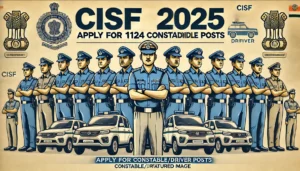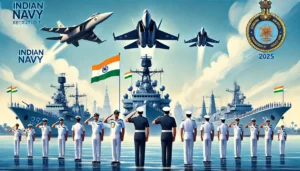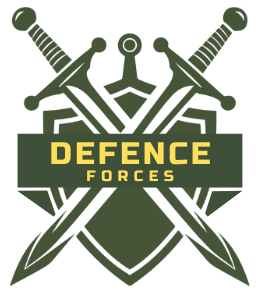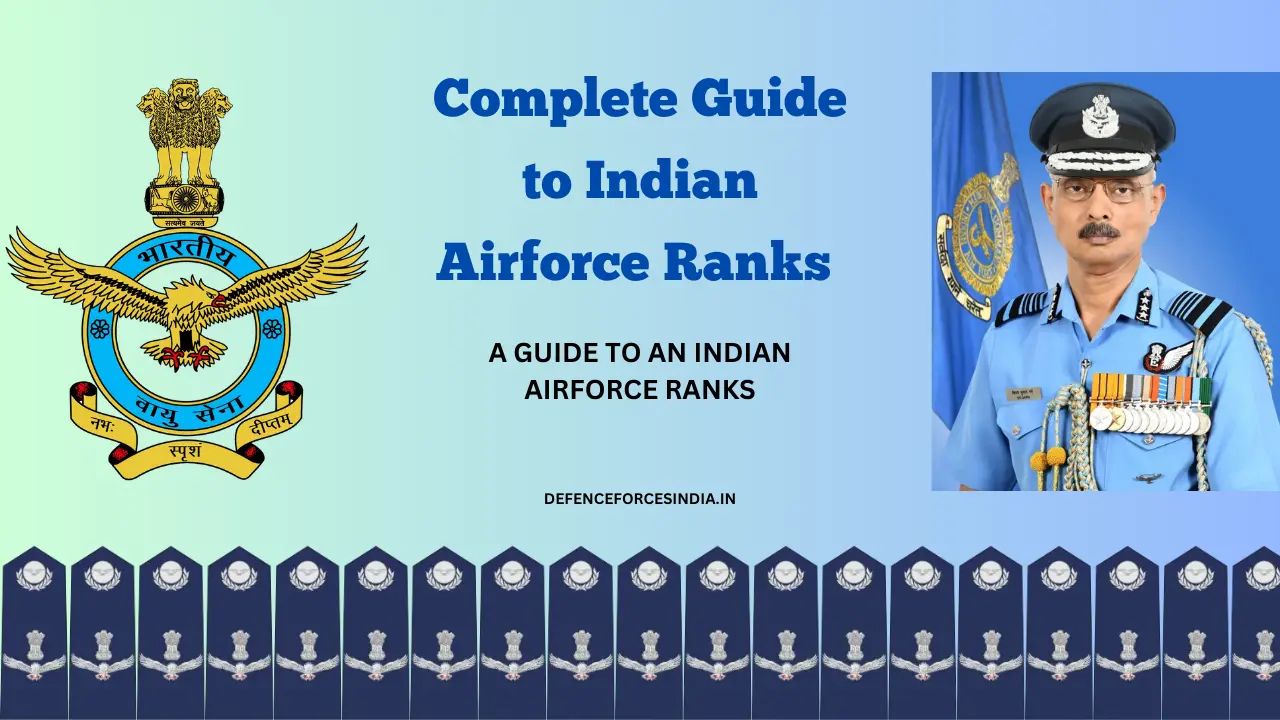The Indian AirForce Ranks(IAF) stands as a pillar of national security, maintaining excellence in air defense and warfare. The rank structure of the Indian Air Force is a key element of its organizational framework, defining roles, responsibilities, and the chain of command. Understanding these ranks not only provides insight into the functioning of the IAF but also showcases the dedication and hierarchy that keeps this elite force running smoothly.
In this guide, we delve deep into Indian Airforce ranks, their significance, and what makes them integral to the operations of the Air Force. From commissioned officers to non-commissioned personnel, this article covers every aspect of rank classification, responsibilities, and career progression within the IAF.
Table of Contents
Introduction to Indian Airforce Ranks
The Indian Air Force, established in 1932, has a structured rank system that upholds discipline, hierarchy, and operational efficiency. Ranks symbolize authority, responsibility, and expertise, ensuring every member understands their role in the organization.
In the IAF, ranks are broadly divided into commissioned ranks (officer cadre) and non-commissioned ranks (enlisted personnel). Each rank reflects the professional journey of its personnel, highlighting their achievements, dedication, and contributions to the nation.
This system not only fosters respect and leadership but also drives personal and professional growth. Whether it’s commanding aerial missions or managing ground operations, every rank carries its unique significance in the broader mission of the Indian Air Force.
Structure of the Indian Air Force
The Indian Air Force operates as a highly organized entity, with a well-defined hierarchy that ensures smooth functioning. The rank structure is a vital part of this organization, enabling clear communication, task delegation, and accountability at every level.
Key Branches of the Indian Air Force
The IAF is divided into three primary branches, each playing a crucial role in the success of its operations:
Flying Branch
This branch is the backbone of the IAF, consisting of pilots and navigators who execute aerial missions. They are responsible for combat missions, reconnaissance, and transport operations.Ground Duty Branch
This branch supports the flying operations by managing administrative, logistical, and financial tasks. Personnel in this branch ensure the seamless functioning of the Air Force’s ground-based activities.Technical Branch
The technical branch maintains and ensures the readiness of aircraft, weapon systems, and other critical equipment. Engineers and technicians in this branch play a pivotal role in maintaining the operational efficiency of the IAF.
Commissioned Ranks in the Indian Air Force
Commissioned ranks represent the officer cadre of the Indian Air Force. These ranks are associated with leadership roles and command responsibilities, ranging from junior officers to the highest echelons of the Air Force.
Junior Commissioned Officer Ranks
Flying Officer
This is the entry-level rank for commissioned officers. Flying Officers typically lead small teams and assist in various operations while gaining hands-on experience.Flight Lieutenant
The next step in the hierarchy, Flight Lieutenants take on greater responsibilities, including managing larger teams and contributing to strategic planning.
Middle-Level Commissioned Ranks
Squadron Leader
Squadron Leaders command a squadron and play a vital role in decision-making and mission execution.Wing Commander
Wing Commanders oversee multiple squadrons and are responsible for implementing tactical operations and strategies.Group Captain
A Group Captain holds significant authority, often managing an airbase or leading a major operational unit.
Senior Commissioned Officer Ranks
Air Commodore
This rank involves overseeing large-scale operations, including multiple airbases or specialized units.Air Vice Marshal
Air Vice Marshals contribute to policy-making and operational planning at the command level.Air Marshal
A high-ranking officer responsible for directing major commands and formulating strategic initiatives.Chief of Air Staff
The highest rank in the IAF, the Chief of Air Staff, leads the entire Air Force and acts as an advisor to the Government of India on matters of air defense.
Non-Commissioned Ranks in the Indian Air Force
Non-commissioned ranks comprise enlisted personnel who perform essential tasks and support roles across all branches of the IAF. These ranks focus on technical expertise, operational support, and leadership at the ground level.
Junior Non-Commissioned Ranks
Leading Aircraftman (LAC)
LACs are entry-level personnel who assist in operational tasks and undergo training for specialized roles.Corporal
Corporals take on supervisory roles and manage small teams within their units.Sergeant
A Sergeant is a key leader at the non-commissioned level, responsible for guiding teams and ensuring mission readiness.
Senior Non-Commissioned Ranks
Junior Warrant Officer (JWO)
JWOs act as senior advisors and often lead sections within their units.Warrant Officer (WO)
This rank carries significant leadership responsibilities and involves supervising junior personnel.Master Warrant Officer (MWO)
The highest non-commissioned rank, MWOs are respected leaders who provide critical guidance and expertise.
Insignia and Badges
Ranks in the Indian Air Force are distinguished by unique insignia and badges worn on uniforms. These symbols signify an individual’s position, achievements, and authority within the organization.
- Commissioned Officer Insignia: Features stars, stripes, and the Ashoka emblem for higher ranks.
- Non-Commissioned Insignia: Includes chevrons and badges that denote rank and specialization.
Understanding these insignia fosters respect and recognition within the IAF and among civilians.
Promotion Criteria in the Indian Air Force
Promotion in the Indian Air Force is a structured and merit-based process, designed to reward excellence and ensure effective leadership at every rank. The criteria for promotion vary between commissioned and non-commissioned ranks, reflecting the different responsibilities and expertise required.
Key Factors for Promotion
Performance Evaluation
Regular assessments of an individual’s performance, technical skills, and leadership abilities are conducted. These evaluations play a significant role in determining eligibility for promotion.Seniority
Time spent in a particular rank is considered alongside performance. Seniority ensures that individuals gain sufficient experience before taking on higher responsibilities.Examinations and Certifications
Officers and enlisted personnel must pass specific examinations to qualify for the next rank. These tests evaluate their knowledge, strategic thinking, and technical proficiency.Leadership Qualities
Exceptional leadership skills and the ability to handle responsibilities under pressure are crucial for advancement, particularly for commissioned officers.Special Achievements
Personnel who demonstrate extraordinary dedication, innovation, or bravery are often fast-tracked for promotions. Awards and commendations add weight to a candidate’s profile.
Responsibilities at Various Ranks
Each rank in the Indian Air Force comes with unique responsibilities that align with the broader objectives of the organization. These roles ensure that the IAF functions seamlessly across its various branches.
Responsibilities of Commissioned Officers
Flying Officers and Flight Lieutenants
They manage day-to-day operations, supervise small teams, and contribute to mission planning.Middle-Level Officers (Squadron Leaders, Wing Commanders)
Middle-level officers take on command roles, making critical decisions during missions and ensuring their team’s operational efficiency.Senior Officers (Air Commodores and above)
These leaders handle strategic planning, oversee large-scale operations, and guide the Air Force’s future direction.
Responsibilities of Non-Commissioned Personnel
Junior Ranks (LACs, Corporals)
They perform technical and operational tasks under supervision, ensuring the smooth execution of assigned duties.Senior Ranks (Sergeants, Warrant Officers)
Non-commissioned leaders supervise junior personnel, provide technical expertise, and contribute to the execution of missions.
Training and Career Progression
The Indian Air Force provides comprehensive training programs to ensure its personnel are prepared for the challenges of their roles. Career progression is supported by continuous learning, skill enhancement, and leadership development.
Entry-Level Training
National Defence Academy (NDA)
Aspiring officers undergo rigorous training at the NDA, focusing on physical fitness, academics, and leadership.Air Force Academy (AFA)
Cadets specialize in flying, technical, or ground duty roles at the AFA, mastering the skills needed for their branch.
Ongoing Career Development
Mid-Career Courses
Officers and enlisted personnel attend advanced courses to enhance their strategic thinking and technical capabilities.Leadership Training
Leadership programs prepare individuals for command roles, fostering the skills needed to lead teams and manage complex operations.
Comparison with Ranks in Other Armed Forces
The Indian Air Force’s rank structure shares similarities with other branches of the Indian Armed Forces, but there are distinct differences in responsibilities and insignia.
Army Ranks: While the Indian Army has ranks like Captain, Major, and Colonel, the IAF uses equivalent ranks such as Flight Lieutenant, Squadron Leader, and Group Captain.
Navy Ranks: The Navy’s structure includes ranks like Lieutenant, Commander, and Captain, paralleling the IAF’s Flying Officer, Wing Commander, and Group Captain.
These comparisons highlight the cohesive yet distinct roles of each branch in safeguarding the nation.
Challenges Faced at Different Ranks
Personnel at all levels of the Indian Air Force face unique challenges, including:
- Junior Ranks: Adapting to high-pressure environments and acquiring technical expertise.
- Middle-Level Officers: Balancing operational responsibilities with leadership duties.
- Senior Officers: Managing strategic decisions while ensuring the well-being of their teams.
Historical Evolution of Indian Airforce Ranks
The rank system of the Indian Air Force has evolved significantly since its inception in 1932. Initially modeled on the Royal Air Force, the IAF adapted its structure post-independence to reflect India’s unique needs.
Key Milestones
- Pre-Independence: Adoption of British ranks and insignia.
- Post-Independence: Introduction of Indianized rank titles and symbols, emphasizing national identity.
This evolution demonstrates the IAF’s journey from its colonial roots to becoming a modern and independent force.
Inspirational Stories from the Indian Air Force
The Indian Air Force is home to countless stories of bravery and dedication. Officers like Marshal of the Air Force Arjan Singh and non-commissioned heroes have inspired generations with their courage and service.
FAQs About Indian Airforce Ranks
What is the highest rank in the Indian Air Force?
The highest rank is the Chief of Air Staff, who leads the entire Air Force.How are promotions decided in the IAF?
Promotions are based on performance, seniority, and examinations.What are the main branches of the Indian Air Force?
The IAF comprises the Flying Branch, Technical Branch, and Ground Duty Branch.What is the role of a Group Captain?
Group Captains typically manage airbases and oversee operations.What insignia represents a Flight Lieutenant?
A Flight Lieutenant wears two thin stripes on their shoulder.How can one join the Indian Air Force?
Candidates can join through the NDA, AFA, or direct entry schemes for technical and non-technical roles.
Conclusion
The ranks of the Indian Air Force embody its values of discipline, excellence, and service. Each rank represents a step in a journey dedicated to the nation’s defense and progress. Whether you’re aspiring to join the IAF or simply seeking to understand its structure, these ranks tell a story of courage, leadership, and unwavering commitment.
Recent Posts
- Indian Air Force Recruitment 2025: Apply Now for Agniveervayu (Sports) Intake 02/2025 17 February 2025
- CISF Recruitment 2025: Apply for 1124 Constable/Driver & Other Posts – Check Eligibility, Salary & Selection Process 11 February 2025
- Indian Navy Recruitment 2025: Apply Online for 270 Vacancies – Check Eligibility, Salary & Selection Process 11 February 2025
- Indian Army Recruitment 2025: Apply Now for 381 Vacancies Before 05 February 19 January 2025
- Ministry of Textiles Recruitment 2025: Apply for Junior Weaver, Junior Assistant, and Other Posts 19 January 2025
Indian Air Force Recruitment 2025: Apply Now for Agniveervayu (Sports) Intake 02/2025

CISF Recruitment 2025: Apply for 1124 Constable/Driver & Other Posts – Check Eligibility, Salary & Selection Process

Indian Navy Recruitment 2025: Apply Online for 270 Vacancies – Check Eligibility, Salary & Selection Process

Indian Army Recruitment 2025: Apply Now for 381 Vacancies Before 05 February

Ministry of Textiles Recruitment 2025: Apply for Junior Weaver, Junior Assistant, and Other Posts


